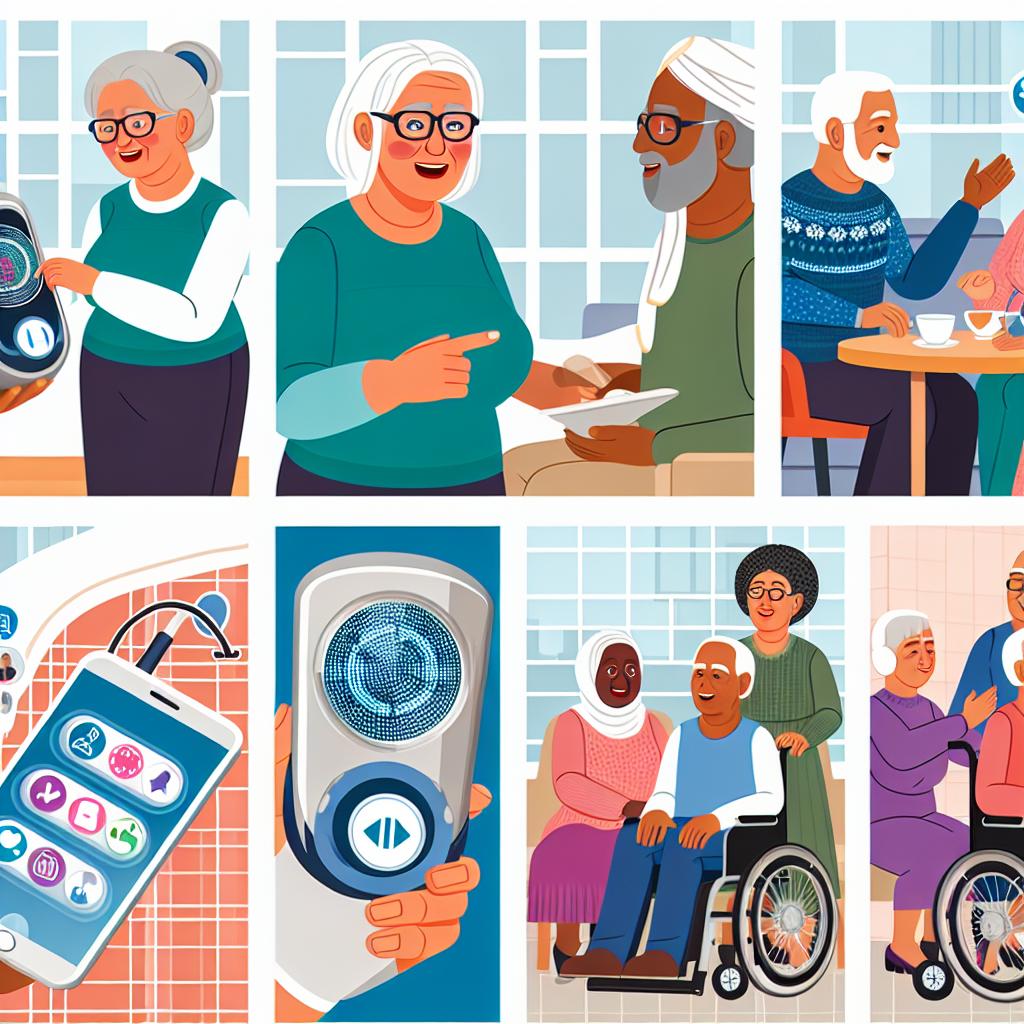Understanding Assistive Technology for Aging Populations
As demographics shift towards an aging global population, there is a growing need to support the elderly in their daily lives. Assistive technology plays an integral role in promoting independence, safety, and overall quality of life for seniors. This article delves into the various types of assistive technologies available and how they can benefit aging populations.
Defining Assistive Technology
Assistive technology refers to devices or systems designed to assist individuals with disabilities or age-related challenges. These technologies can range from simple tools to advanced equipment that helps improve functionality, mobility, and communication. The primary goal of such technology is to enhance the autonomy and well-being of older adults.
Categories of Assistive Technology
There is a broad spectrum of assistive technologies tailored to meet the diverse needs of the elderly. Some notable categories include:
Mobility Aids: Devices such as walkers, wheelchairs, and motorized scooters help individuals who have difficulty with movement or balance. These tools offer older adults the ability to move around independently, reducing reliance on caregivers for everyday mobility needs.
Hearing Assistance: Products like hearing aids and amplified telephones assist those with hearing impairments. Hearing aids have evolved significantly over the years, becoming more adaptable, smaller, and more efficient in their capacity to enhance sound and improve the hearing experience of the elderly.
Vision Aids: Technologies such as magnifying tools and screen reading software support individuals with visual disabilities. These aids empower seniors with deteriorating eyesight to continue engaging with the world around them, whether through reading printed texts or accessing digital content.
Communication Devices: Tablets and specialized communication apps can aid those with speech impairments, enabling them to stay connected with loved ones and caregivers. By facilitating interaction, these devices help prevent isolation, a common concern among the elderly.
Home Safety Technologies: Monitoring systems, fall detection devices, and smart home technologies allow seniors to maintain independence while ensuring safety. These technologies provide peace of mind to both the users and their families by addressing safety concerns related to living alone.
The Impact of Assistive Technology
The introduction of assistive technology has transformed the way older adults lead their lives. These advancements not only help reduce dependency on caregivers but also enable seniors to engage more actively in their communities. By empowering the elderly, assistive technology contributes to improved mental health, reduced incidences of accidents and falls, and greater participation in recreational and social activities.
One of the significant impacts is the improvement in mental health. With greater independence comes a sense of control and purpose, which can alleviate feelings of depression and anxiety often experienced by seniors who feel they are a burden. Moreover, these tools enable seniors to remain in their homes longer, preserving their connection to familiar environments and fostering emotional well-being.
Furthermore, assistive technologies markedly reduce incidences of accidents and falls, which are common occurrences in the elderly population. By utilizing technologies designed to prevent falls and notify emergency services if a fall occurs, seniors can feel more secure in their environment, reducing hospital visits and preventing further health complications.
Finally, these technologies facilitate increased participation in recreational and social activities, as they break down barriers that might otherwise restrict the elderly from joining social gatherings, engaging in hobbies, or traveling. This participation is essential for maintaining cognitive health as well as a sense of community belonging.
Challenges and Considerations
Despite the numerous benefits, there are challenges in implementing assistive technology solutions. Cost can be a significant barrier, as many seniors may have limited financial resources. The availability of affordable assistive technology is crucial to ensuring that all seniors can access the necessary tools to lead independent lives.
Additionally, the adoption of technology requires training and support, as some older adults may not be familiar or comfortable with new technologies. Many elderly individuals did not grow up with technology as a part of their daily lives, which can make adapting to new devices daunting. Education and training initiatives are essential to bridge this gap, ensuring that seniors can comfortably use assistive technologies to their full potential.
Policymakers and healthcare providers need to work collaboratively to address these barriers and ensure that assistive technologies are accessible and affordable. Accessibility not only refers to the financial aspect but also to how intuitive these technologies are in terms of user interface and design. Technologies must be developed with older users in mind, considering ease of use as a primary factor.
Moreover, there is an ongoing need to continuously innovate and adapt these technologies as the elderly population becomes more diverse in its needs and expectations. Engaging in regular research and feedback collection from the users themselves could lead to significant improvements and uptake of assistive technologies.
For further reading on assistive technology and its implications, please visit [National Institute on Aging](https://www.nia.nih.gov/health/support-daily-living-technology).
In conclusion, assistive technology holds significant potential to enhance the quality of life for aging populations. By providing tools that align with the unique needs of seniors, society can ensure that older adults continue to live with dignity and independence. The journey involves overcoming financial, educational, and accessibility challenges but ultimately promises a future where aging individuals can maintain their autonomy and thrive in varying aspects of life.
